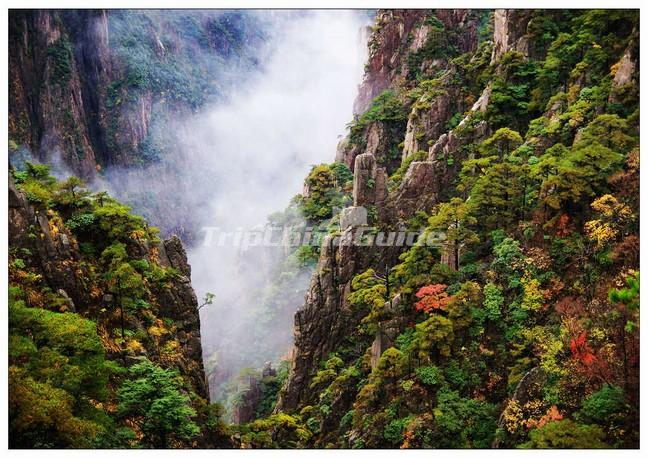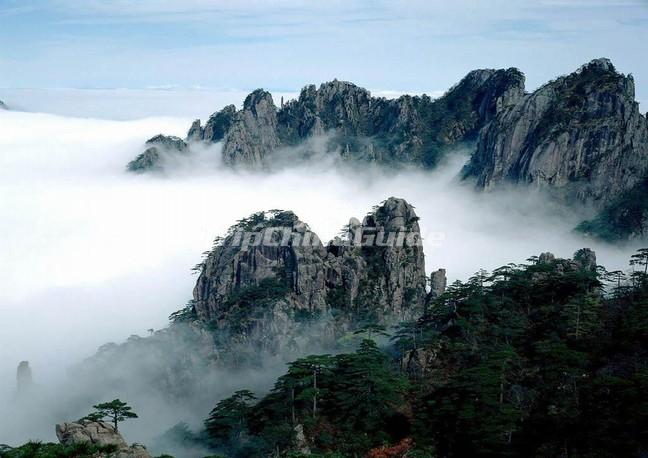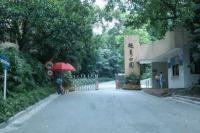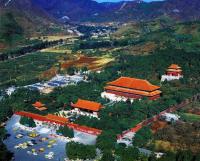Yellow Mountain Facts
Yellow Mountain or Mount Huangshan is located in Huangshan City, south of Anhui Province. The mountain range measures 40 kilometers long from north to south, and 30 kilometers wide from west to east. It occupies a total area of 1,200 square kilometers with a core area of 160.6 square kilometers. The mountain is a landform typical of Mesozoic granite. Its highest peak, the Lotus Peak, rises 1,864 km above sea level. Officially designated as one of China’s top 10 scenic spots, it is the only one famous for mountain scenery.
The area is well known for its scenery, sunsets, peculiarly shaped granite peaks, Huangshan pine trees, and views of the clouds from above. Huangshan is a frequent subject of traditional Chinese paintings and literature, as well as modern photography. It is a UNESCO World Heritage Site, and one of China's major tourist destinations.
History of the Yellow Mountain
Huangshan was formed approximately 100 million years ago and gained its unique rock formations in the Quaternary Glaciation.
During the Qin Dynasty, Huangshan was known as Yishan (Mount Yi). In 747 AD, its name was changed to Huangshan (Mount Huang) by imperial decree; the name is commonly thought to have been coined in honor of Huang Di (the Yellow Emperor), a legendary Chinese emperor and the mythological ancestor of the Han Chinese. One legend states that Huangshan was the location from which the Yellow Emperor ascended to Heaven. Another legend states that the Yellow Emperor "cultivated moral character and refined pills of immortality in the mountains, and in so doing gave the mountains his name. The first use of this name "Huangshan" is often attributed to Chinese poet Li Bai. Huangshan was fairly inaccessible and little-known in ancient times, but its change of name in 747 AD seems to have brought the area more attention; from then on, the area was visited frequently and many temples were built there.
Huangshan is known for its stone steps, carved into the side of the mountain, of which there may be more than 60,000 throughout the area. The date at which work on the steps began is unknown, but they have been said to be over 1,500 years old.
In 1982, Huangshan was declared a "site of scenic beauty and historic interest" by the State Council of the People's Republic of China. It was named a UNESCO World Heritage Site in 1990 for its scenery and for its role as a habitat for rare and threatened species. In 2002, Huangshan was named the "sister mountain" of Jungfrau in the Swiss Alps.
Major Scenic Spots in the Yellow Mountain
1. Lotus Peak of Mt.Huangshan
Lian Hua Peak (Lotus Peak) has an elevation of over 1873 meters. Its shape resembles a lotus blossom, giving the peak its name. The "blossom" is over ten feet in width. There is a small pool located in the middle of the "blossom" named
Moon Pool. From the apex, visitors can see thousands peaks and numerous ravines in the misty clouds. On a clear day, Tianmu Mountain can be seen in the east, Lushan Mountain in the west, Jiuhua Mountain and the Yangtze River in the
north. The sea of clouds viewed from Lotus Peak is most spectacular after a rain.
2. Jade Screen Scenic Area of Mt. Huangshan
There is a Jade Screen Pavilion perched high amongst the clouds, which is reputed as an "imperial palace in heaven" in the Jade Screen Scenic Area. Huangshan Mountain's three famous main peaks: Guangming Peak (Sunshine Peak), Lian Hua
Peak (Lotus Peak), and Tiandu Peak (Heaven Capital Peak) are all located near the Jade Screen Scenic Area.
3. Hot Springs Scenic Area of Mt. Huangshan
The nationally famous hot springs of Yellow Mountain were tapped more than a thousand years ago. Gushing forth from the foot of Purple Cloud Peak, the springs have never run dry in severe drought or overflowed under torrential rainfall.
The high temperature waters have long been heralded for their therapeutic effects in treating metabolic, digestive, nervous, cardiovascular and motorial system disorders. Its clear waters remain at 42`C all year round and can be used for
drinking and bathing, for whose purpose baths and swimming pools have been built.
4. White Cloud Scenic Area of Mt. Huangshan
The newly-opened White Cloud Scenic Area covers an area of over 16.5 square kilometers. Here, the pines, the rocks, the ridges and peaks are more colorful and wonder than those of the other zones. The gullies and valleys are deep and
tranquil and the glow of sunset upon this area is beyond description. It is known as the "mysterious western world of Mt. Huangshan". In this zone, there are 16 viewing terraces, 10 bridges, and 6 different waterfalls and natural springs.
5. North Sea Scenic Area of Mt. Huangshan
The North Sea Scenic Area is a few kilometers away from the Cloud-dispelling Pavilion of the West Sea Scenic Area, is the hub of Mt. Huangshan. The Yellow Mountains Xihai Hotel is located between the North and West Sea Scenic areas. The
Beihai Hotel is located near the Lion Peak, at an altitude of 1,630 meters above sea level. So visitors can spend the night to see the spectacular sunrises.
6. West Sea Scenic Area of Mt.Huangshan
West Sea Scenic Area is the best place for viewing the sea of clouds and the sunset on Huangshan Mountain. Here, the beautiful peaks and ancient pines leave visitors awe-struck.
7. Pine Valley Scenic Area of Mt.Huangshan
Situated on Huangshan Mountain's northern face, the Pine Valley Scenic Area can be reached by climbing over 6,500 steps. Beginning from Lotus Ridge, the north gate of Huangshan Mountain, and climbing the north steps, visitors can reach
the Pine Valley Scenic Area. The air in this area has very high oxygen content due to the numerous plant species that grow here. The bizarre rock formations and natural pools are the highlights of this area.
8. Heavenly Sea Scenic Area of Mt.Huangshan
Situated on Huangshan Mountain's North Slope the Heavenly Sea Scenic Area has high oxygen content. This area can be reached from the Lotus Ridge, the north gate of Huangshan Mountain, by climbing over 6,500 steps. The rare plants that
grow in this area are the highlight of this area.
Climate of the Yellow Mountain
The temperature changes vertically in Yellow Mountain and the climate of the mountain is varied on different elevation. It generally has 3 climate types from the base to top: subtropical mountain base, temperate mountainside and frigid mountaintop.
According to the data from 1956 to 1980, the annual average temperature of the whole mountain is 7.8 °C. Average is 17.7 °C in the hottest July, -3.1°C in the coldest January. The record high at the mountain top is 27.1 °C; record
low is -22 °C. (Bright Summit) The record high at the mountain base is 34.2 °C; record low is -13.6 °C. (Hot spring Area) There are 108 frost days (equal or below 0 °C) a year, 21 severe frost days (equal or below -10 °C) a year.
Transportation
Beijing- Tunxi
There is only one flight per day schedules at 19:00-21:00.
Shanghai- Tunxi
There is only one flight a day scheduled at 20:50-21:50
Tunxi-Huangshan (65km)
It takes one and a half hours by bus to reach Huangshan. Buses from Tunxi usually drop off passengers in Tangkou by the bridge or at the bus station in upper Tangkou near the Huang Shan Front Gate.
Entrance Fee
Peak Season (March-November): RMB 230
Slack Season (December-February): RMB 150
Opening Hours
Weekday and Sunday: 06:30-16:30
Saturday: 06:00-16:30
Tips for a Visit to the Yellow Mountain
1. Weather on top of the mountain is notoriously unpredictable so be prepared.
2. Remember to wear comfortable waterproof shoes when you are on the mountain.
3. Do not bring too many unnecessary things with you as there is a lot of stairs to climb to tire you out.
4. We recommend taking a raincoat instead of an umbrella as quite often lightening accompanies the rain.
5. Band-aids and mosquito-repellent are also useful things to take.
















